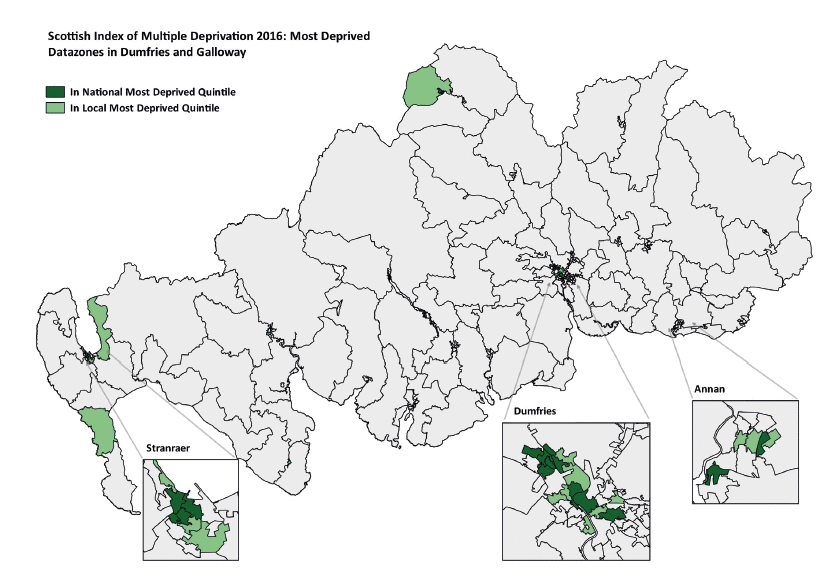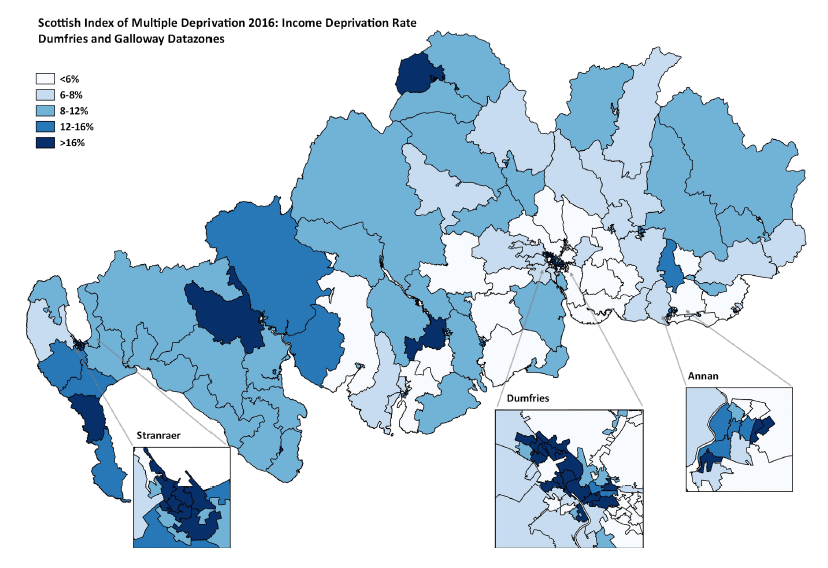Scottish Index of Multiple Deprivation 2020: introduction
This booklet provides an overview of the Scottish Index of Multiple Deprivation 2020 - a tool for identifying the places where people are experiencing disadvantage across different aspects of their lives.
Using SIMD in Dumfries and Galloway
Dumfries and Galloway is a large region which includes sparsely populated and remote rural areas, as well as towns and urban neighbourhoods. Researchers at the University of Glasgow's Dumfries Campus reviewed local evidence to inform Dumfries and Galloway's poverty strategy. They used the results of SIMD, along with background data and other information, to look at where people experiencing deprivation live, and what issues they face.
SIMD is really helpful for people who are making decisions about how to target resources, but it does need to be used carefully in rural areas because:
- data zones in rural areas are bigger than those in urban areas
- pockets of deprivation are smaller in rural areas: these are more likely to include a mix of households experiencing different levels of deprivation
- problems of transport and distance to employment and services are very important features of rural deprivation. They are part of SIMD but have less influence on the overall SIMD rank compared to other domains such as employment and income.
What does this show us?
If we look at the 20% most deprived data zones in Scotland (dark green), we find some in D&G, mostly in and around the largest towns. But if we look at the 20% most deprived data zones within D&G (light green), we find this includes areas which are more rural.


What does this show us?
If we look at the income domain of SIMD, we find that people who are experiencing income deprivation (shown in darker blue) are spread across the region: 80% of people on low incomes live outside the most deprived places.
Why is this important?
This means that we can't assume that every person living in an area with a high level of deprivation will experience disadvantage. We also can't assume that every person living in an area with low levels of deprivation will not experience deprivation in a variety of ways.
When using SIMD we need to be clear about what we are using SIMD for.
Are we looking to identify the particular problems of specific places? Using SIMD in this way will work in rural places, especially if comparing places within a local region.
Or is it being used as a convenient way to identify people experiencing disadvantage? This approach will not work as well in rural areas, and we need to look at other ways of assessing need and making decisions about allocating resources.
The analysis of the Scottish Index of Multiple Deprivation in Dumfries and Galloway, combined with other information, including the views of local people and partners, has helped to inform the approach that the local authority and its partners have taken to tackling poverty: for instance, a focus on transport to improve access to employment opportunities and services, and addressing fuel poverty.
The report Poverty and deprivation in Dumfries and Galloway is available at http://eprints.gla.ac.uk/108111/1/108111.pdf.
Contact
Email: elizabeth.fraser@gov.scot
There is a problem
Thanks for your feedback